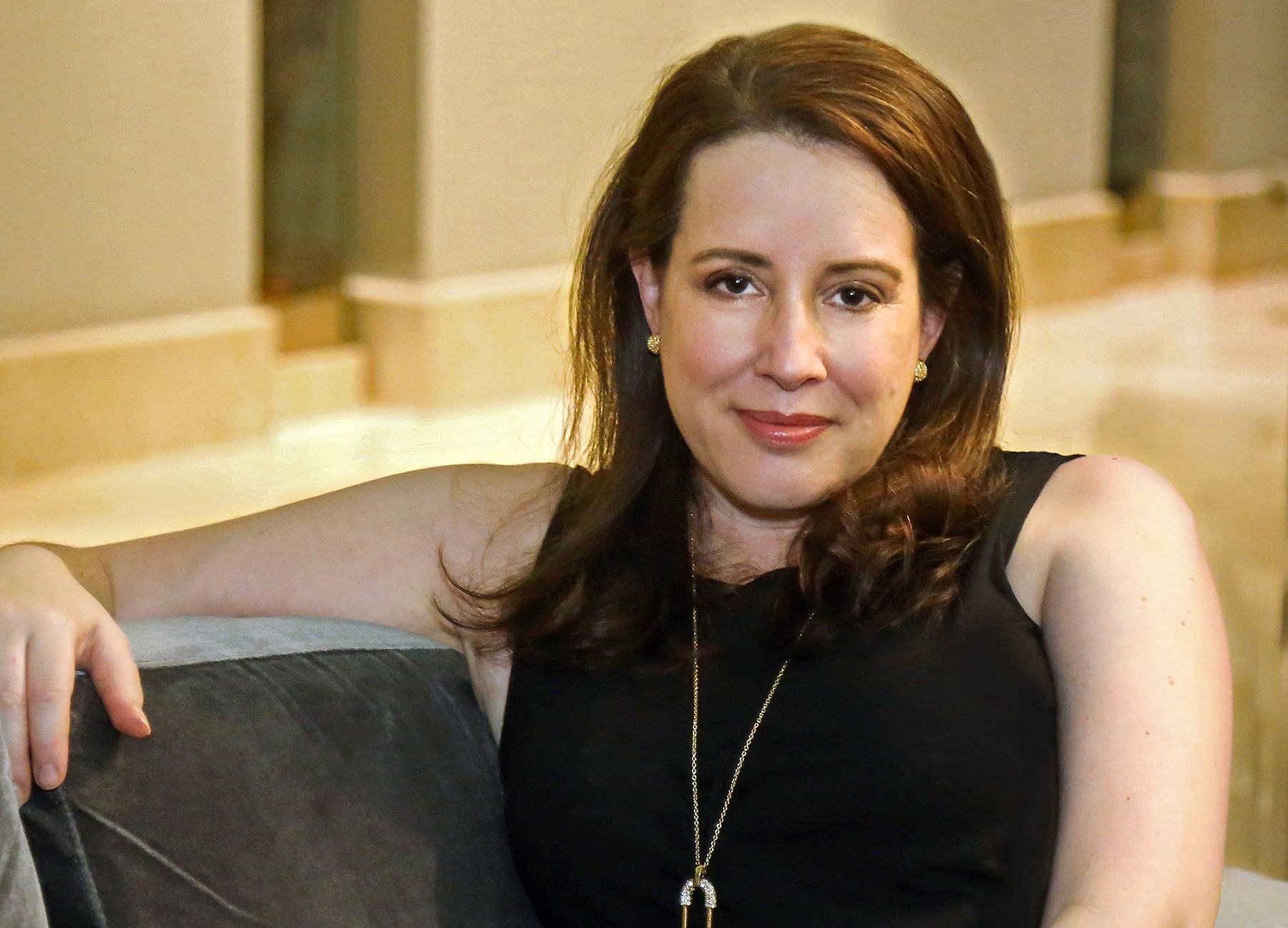
Being a teacher of British Lit comes with its own occupational hazards, not the least of which are the books of Jane Austen. It may seem obvious, even expected, that very few of my students dislike Austen. Nearly her entire body of work remains popular and adapts well to the screen from the six hour BBC version of Pride and Prejudice to 1995’s Clueless. The danger of Austen is that she will ruin you for other authors, the next perfect romance novel just barely out of reach. The other minefield is that she is the gateway drug for historical romance, leading you into an addiction fueled by many novels that mostly miss the mark. Over the years, however, I have encountered a few authors who have held my attention, not measuring up to Austen by any stretch, but holding their own among contemporary fiction. One of these is Julia Quinn.

Julia Quinn began writing thirty years ago while studying science at Harvard, her first novels being published after her acceptance into Yale School of Medicine. She soon dropped out of med school to become a full-time author and used her research skills to write historical romance instead. Her novels, namely the eight books in the Bridgerton series, are smart, with crisp, witty dialogue, in a well-crafted universe where many stories overlap and the characters shine. Her progressive heroines manage to embody feminist ideals while also toeing the line of many of the tropes popular in romantic storytelling. When I first read the series ten years or so ago, the first novel was already almost 15 years old, and looking back now, I can see how dated some of the storylines and themes seem nearly 25 years later. However, I remember thinking “these would make for great TV,” and wondering why Hollywood ignored smart, contemporary historical romance. Fortunately, a decade later, it took notice. Enter Shonda Rimes.
When I heard she was adapting the novels to a Netflix series, I couldn’t wait to see how the stories would play out on the screen. They would need to be updated for a 2020 audience, of course, yet somehow still retain the charm of the original book series. Fortunately, I, along with the rest of the COVID crowd, became captivated by her reimagining of Quinn’s universe. From the color blind exceptional casting (seriously, they deserve all the awards), to the orchestral arrangements of pop songs, to the engaging dialogue, to the wigs–my God, the wigs!--Bridgerton manages to capture the humor, the sharpness and cleverness of the conversation, the warm family dynamic, and the spicy storylines of the original books while making it relevant for a modern audience. It was the perfect antidote to the nightmare unfolding around us. Some changes were made. Characters were introduced from other books or made up altogether, the timeline was compressed, the order in which the stories occurred altered. Still, Rimes made it her own while also appealing to the fans of the print series.
For the uninitiated, the Bridgerton novels are about eight Bridgerton siblings, named alphabetically by age (Anthony, Benedict, Colin, Daphne, etc.), each of whom get their own story in separate books. So far, three novels, out of order, have been adapted: The Duke and I, The Viscount Who Loved Me, and the most recent season about Colin’s story, Romancing Mr. Bridgerton. Netflix has chosen to release the third season in two installments: four episodes each on May 16 and June 13. Each season has its charms, but the third season is unique in several ways. The story centers around Colin Bridgerton and family friend Penelope Featherington. The characters’ arc has been a slow burn. Each season reveals more about the crush wallflower Penelope has on Colin the world traveler. What makes this season different are the characters of Penelope and her alter ego, Lady Whistledown, a gossip columnist who scathingly editorializes society happenings. The often ignored Penelope herself flies below the radar and therefore is able to retain her anonymity among her peers. She skewers the cruel debutantes and promotes those who are kind to her, shaping society with every publication. Her columns make her quite a bit of money, which she surreptitiously uses to support her family and by the third season, break out of her shell. Penelope, played by the superb Nicola Coughlan, is a voluptuous five feet tall, not the usual size and shape for a romantic heroine. While contemporary romance novels often feature heroines of different sizes, Hollywood has not often followed suit, which makes Bridgerton fans excited about and anxious for how Rimes has chosen to portray a lead character with such a groundbreaking body type. Since Bridgerton also includes quite a bit of nudity, Coughlan has said in interviews that she had to change her thinking about her self-image, seeing herself as a romantic heroine rather than the comical actor she has always been, such as her stint as Clare Devlin in Derry Girls. At 37, playing a 20 year old, Nicola also shows that age is just a number and that young, nubile actresses no longer have to be the gold standard in casting. Both Colin and Penelope’s characters have quite the “glow up” this season as they step into their lead roles. Penelope, known for her gowns in unflattering ruffles in citrus colors sporting frumpy hairstyles, acquires a new curvy girl wardrobe and sexy coiffure, with Colin somehow gaining a jawline. If Bridgerton Tik-toks are any indication, fans are obsessed, probably because Penelope is the most progressive and relatable character to date, and is due for her own fairy tale ending.

With Jane Austen’s sharp social commentary and observations about Regency era rules and conventions in her novels, I can’t help but think she would approve of such improvements on the original series. Some aspects of this series and historical romance in general may bother some traditionalists, however. After all, very little of what we like to see in these stories is historically accurate. If accuracy bothers you, then stay away from Renaissance festivals and Star Trek. Bridgerton is more like historical fantasy than anything, and in today’s world, fantasy is medicine. Similarly, some may complain about problematic plot points such as a nonconsensual sexual encounter in the first season (which is faithful to the book and crucial to the storyline). Since it is perpetrated by a woman, audiences don’t seem as troubled, but yet it still exists. To be fair to Shondaland, consent seems critical to much of the series, especially in at least one scene, the carriage episode in Season Three, when permission is given no less than three times. IYKYK. Gone are the male dominated bodice rippers of the 70’s. Rimes clearly plays to her legions of female fans when she gives them what they crave in contemporary media–female agency. Similarly, Bridgerton is not only about women’s control, but about the female gaze. Quinn, Rimes, and Penelope tell their own stories for the benefit primarily of women. The male actors share a substantial portion of nude scenes, female pleasure becomes the focus of many of the encounters, and I was fascinated to see a scene in Season One when the heroine swoons at the object of her affection as he savors ice cream. Rimes has clearly thought this through even down to dairy consumption.
Rimes does not only give plenty of attention to female desire, she also gives screentime to characters who are LGBTQ, disabled, and mentally ill, and characters not only of other races, but other cultures, individuals who don’t often appear in historical romances that tend to preserve the status quo. It can be jarring to see an aristocrat in a wheelchair or a debutante using sign language, but necessary to paint a complete picture of society. Historical romances may never include realities such as body hair and bad teeth, but they should certainly portray the full range of the human experience.
Whether or not Rimes adapts all eight of the novels in the series to the screen remains to be seen. She is contracted to complete at least one more season, though has not yet announced which sibling’s story will be portrayed. Despite the fact that even the Jane Austen canon arguably contains only six novels, I predict with Shonda’s popularity, she will be signed on to give us the entire series. Until the second part of Season Three is released in June, speculation will remain fever-pitched. Social media is already awash with clips, interviews, and theories about what details from the novel will be included. A Bridgerton summer is a steamy summer indeed. Until the next season comes out, we will have novels to keep us occupied, and hopefully, down the line, more screen adaptations from other talented historical romance writers like Lisa Kleypas or Sarah Maclean. It’s time for this genre to be given the attention and screen time it deserves. Jane would certainly want it that way.




